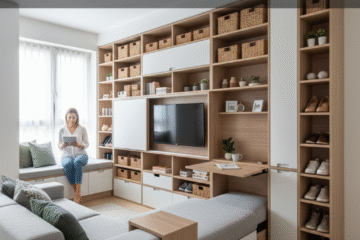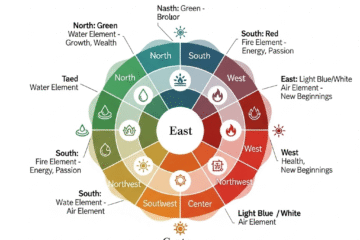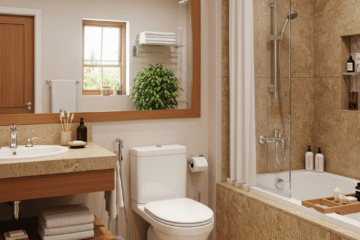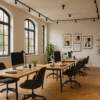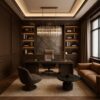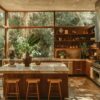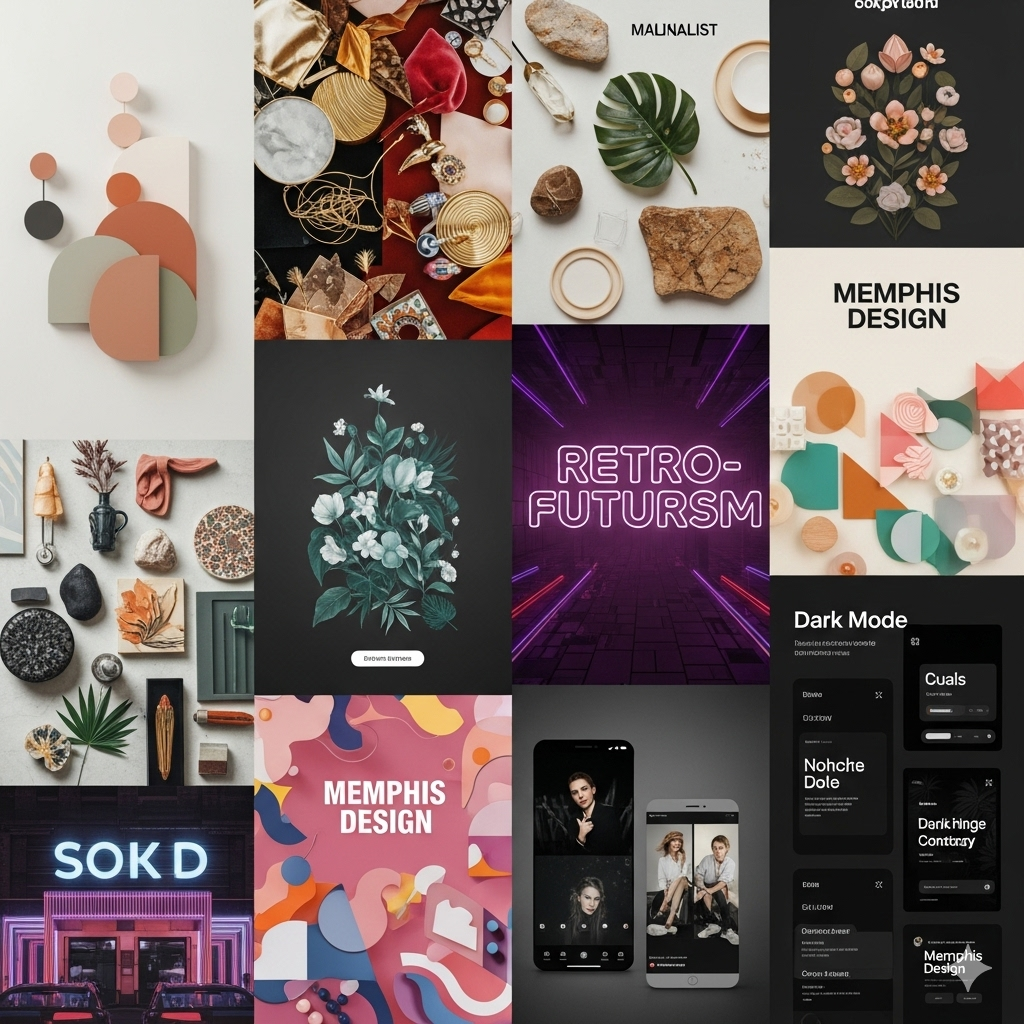
Design Trends: Explore Modern, Minimalist, and Timeless Interior Styles
Design Trends have always played a central role in how homes evolve with time. Every era brings in its own flavor of interior design, influenced by culture, lifestyle, functionality, and global movements. In today’s modern homes, Design Trends are more diverse than ever, offering a blend of simplicity, comfort, elegance, and bold statements. Whether you want to embrace minimalism, experiment with boho maximalism, or keep the timeless Indian traditional touch alive, following the right Design Trends can completely transform your living space.
The essence of Design Trends lies in balancing style with personal preference. While trends are dynamic, your home should always reflect your lifestyle, comfort, and personality. From color palettes to textures, materials to furniture styles, Design Trends help homeowners stay inspired and create spaces that feel current and inviting.
One of the most popular Design Trends dominating interiors today is modern and minimalist design. Minimalism thrives on simplicity, decluttered spaces, and functional layouts. Clean lines, neutral color palettes, and open spaces define this style. It focuses on “less is more,” ensuring that every piece of furniture or décor has a purpose. Minimalist homes also tend to use multi-functional furniture and natural light to create airy, calming spaces.
Table of Contents
Looking for experts who specialize in trending interior styles?
Connect with top designers at InteriorGrid.com today.
Scandinavian style
Scandinavian style has emerged as one of the most influential Design Trends worldwide, celebrated for its seamless blend of functionality, simplicity, and warmth. Rooted in Nordic culture, this design philosophy emphasizes minimalism without sacrificing comfort, creating spaces that feel open, airy, and inviting. Light wooden tones are a hallmark of Scandinavian interiors, used extensively in flooring, furniture, and cabinetry to create a natural, cohesive look. Soft textiles, such as woolen throws, linen cushions, and cozy rugs, add layers of warmth and tactile comfort, balancing the otherwise clean and understated aesthetic.
Pastel shades and muted color palettes dominate Scandinavian interiors, providing a calming backdrop that allows furniture and décor elements to shine. Uncluttered layouts, smart storage solutions, and multifunctional furniture are integral to this style, ensuring every piece serves a purpose while maintaining a visually open environment. This makes Scandinavian design particularly appealing for smaller homes or apartments, as it maximizes space perception and promotes an organized, stress-free lifestyle.
In India, many homeowners embrace Scandinavian touches as part of contemporary Design Trends, adapting its principles to local living conditions. Light wooden flooring, pastel-painted walls, minimalistic furniture, and warm, ambient lighting are commonly incorporated to achieve a homely yet stylish atmosphere. This fusion allows homeowners to enjoy the serenity, functionality, and modern elegance of Scandinavian interiors while retaining cultural familiarity. By integrating Scandinavian elements thoughtfully, one can create spaces that are both visually appealing and highly livable, perfectly reflecting the balance of modernity and comfort.
The Boho Trend
On the opposite end of minimalism lies the boho and maximalist trend, which has gained immense popularity among younger homeowners. This trend embraces bold colors, layered textures, patterns, and an eclectic mix of décor elements. Boho interiors often feature earthy tones combined with vibrant accents, natural elements like rattan and jute, and artistic wall hangings. Maximalism, on the other hand, encourages the use of bold wallpapers, statement furniture, and a mix of modern and vintage elements. Both boho and maximalist Design Trends create vibrant, expressive, and personalized homes.
Indian traditional interiors
Indian traditional interiors continue to dominate as a prominent Design Trend, particularly in regions like Delhi NCR, where homeowners cherish cultural heritage and artisanal craftsmanship. These interiors emphasize intricate woodwork, traditional motifs, and vibrant colors that bring warmth and personality to any space. Elements such as carved wooden furniture, hand-painted ethnic fabrics, brass décor items, and dedicated temple or pooja spaces have remained timeless, serving both functional and aesthetic purposes.
Even in contemporary apartments, modern layouts are often harmoniously blended with traditional features. For example, homeowners may integrate a small pooja room, decorative jharokhas, or handwoven rugs into minimalist spaces. This fusion ensures that modern comforts like open-plan living, modular kitchens, and smart lighting coexist with heritage-inspired elements, creating interiors that feel both elegant and culturally resonant. By thoughtfully combining old-world charm with contemporary design solutions, Indian homes achieve a unique balance that continues to influence interior design trends nationwide.
Such Design Trends not only reflect aesthetic preferences but also preserve a connection to ancestry, craftsmanship, and regional identity, making them enduring and highly sought after in the current real estate and interior design market.
Get personalized recommendations for trending interiors that match your lifestyle at InteriorGrid.com.
Color is one of the most powerful aspects of Design Trends. While neutral shades like white, beige, and grey dominate minimalist homes, bolder hues like emerald green, mustard yellow, and navy blue are trending in accent walls and statement furniture. Seasonal colors also play an important role. Warm earthy tones dominate during autumn and winter, while lighter shades and floral themes take center stage in spring and summer.
Seasonal Design Trends
Seasonal Design Trends are a creative and cost-effective way to rejuvenate your home throughout the year without undertaking major renovations. By embracing small but impactful changes, homeowners can maintain a dynamic and inviting interior that reflects the current season or occasion. For instance, swapping cushion covers, rugs, and curtains according to seasonal colors or textures instantly transforms the look and feel of a room, giving it a fresh and lively appearance.
In summer, incorporating airy fabrics, sheer curtains, and indoor plants can create a cool and vibrant atmosphere, while lighter colors and natural materials help reflect sunlight and maintain a sense of openness. During winter, layering cozy throws, warm-toned rugs, soft cushions, and scented candles can make spaces feel inviting and comfortable. Seasonal festive décor, like Diwali lights, Christmas ornaments, or spring-themed accessories, can further enhance the celebratory mood of your home.
By following Seasonal Design Trends, interiors stay engaging and personalized all year round. These trends allow homeowners to experiment with color palettes, textures, and décor pieces without committing to permanent changes, offering both flexibility and creativity. Additionally, small updates aligned with seasonal trends can boost mental well-being, as environments that feel refreshed and vibrant positively impact mood and energy.
Sustainable interiors
Sustainable interiors are another rising trend that homeowners are embracing worldwide. Eco-friendly materials like bamboo, recycled wood, jute, natural fabrics, and non-toxic paints are increasingly popular. Sustainable Design Trends not only reduce environmental impact but also create healthier living spaces.
Another trend is the use of smart technology in interiors. From smart lighting systems that adjust based on mood to AI-powered appliances and voice-controlled gadgets, homes are becoming more intelligent and efficient. This trend is especially popular in urban cities like Delhi NCR, where compact spaces require multifunctional and tech-driven solutions.
Furniture choices also reflect current Design Trends. Curved furniture with soft edges is making a comeback, replacing the sharp and rigid lines of previous decades. Compact, modular furniture remains a popular choice for small apartments. Multipurpose units like sofa-cum-beds, foldable dining sets, and wall-mounted study tables are trending in metropolitan homes.
Textures and materials also play a vital role. Terrazzo flooring, cane furniture, velvet fabrics, and metallic accents like gold and copper are finding their way back into modern homes. Combining textures creates visual depth and elevates the overall design without major renovations.
Lighting trends are also shifting towards layered solutions. Homeowners now prefer combining ceiling lighting, pendant lamps, and floor lamps to create versatile moods. Warm LED lighting is preferred over harsh white lights to give homes a cozy, welcoming feel.
Open layouts and multifunctional spaces are key Design Trends for urban homes. With work-from-home becoming common, spaces now double up as home offices, gyms, and relaxation corners. Smart partitions, movable furniture, and flexible layouts are being adopted widely.
Outdoor spaces like balconies and terraces are no longer ignored. Current Design Trends highlight balcony gardens, outdoor seating, and vertical planters to create a refreshing extension of the home. Especially in cities, these outdoor zones have become vital relaxation areas.
Art and personalization are increasingly shaping Design Trends. Statement wall art, gallery walls with family photos, and handmade crafts are gaining popularity. These elements give homes a unique personality while staying affordable.
Another important factor in Design Trends is the blending of cultures. Modern Indian homes often combine global influences with local craftsmanship. For instance, Scandinavian furniture can be paired with Indian handloom fabrics, or modern layouts can feature traditional jali work as accents. This fusion
Explore the latest trending interiors with professional guidance on InteriorGrid.com today.
In conclusion, Design Trends are far more than fleeting fads—they are thoughtful tools that allow homeowners to express their personality, enhance lifestyle, and improve the functionality of their spaces. Following design trends doesn’t mean blindly replicating what is popular; it involves carefully selecting elements that resonate with your personal taste, complement your home’s architecture, and support your day-to-day living.
For example, the elegance of minimalism offers clean lines, uncluttered spaces, and a calming environment ideal for modern urban living. Scandinavian designs bring warmth through natural materials, soft textiles, and a harmonious balance of functionality and aesthetics. On the other hand, boho maximalism allows for bold color palettes, layered textures, and eclectic décor, giving your home a lively and creative personality. Indian traditional designs continue to hold relevance by celebrating cultural heritage through intricate woodwork, ethnic fabrics, brass accents, and carefully curated pooja or temple spaces.
The key is to combine inspiration with practicality: selecting furniture, materials, and color schemes that not only look appealing but also suit your family’s needs and long-term lifestyle. By staying informed about emerging Design Trends and making mindful choices, homeowners can craft interiors that are stylish, functional, and future-ready. Thoughtful integration of trends ensures your home remains timeless, comfortable, and reflective of your unique personality while also being adaptable to evolving tastes and needs.

